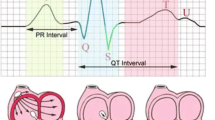Abstract
ElectroCardioGram(ECG) bio-sensors are used to detect and transmit the electrical activity of the heart over a period of time. The ECGs are treated by a signal processing unit inside the bio-sensor to detect and identify heart related medical conditions. Testing and verification of bio-sensor is of paramount importance as faults in these critical systems may lead to loss of life. However, due to the complexity of these systems traditional testing methods might not be adequate to provide high level of assurance about the correctness of their operation. In this paper, we propose a verification framework where we utilize simulation and formal methods to validate the correctness of the ECG bio-sensor. The framework is used to verify ECG bio-sensor at several levels of abstractions, including the signal processing level, where the ECG signal attributes, signal processing algorithm including its filters, detection and analysis algorithms, and triggering the alarm are modeled.















Similar content being viewed by others
References
Abrial, J. (2009). Faultless systems: Yes we can! IEEE Computer Journal, 42(9), 30–36.
Boca, J., & Siddiqi, J. (2009). Formal methods: State of the art and new directions. London: Springer.
Abrial, J. (2009). Modelling in Event-B: System and software engineering. Cambridge University Press.
Abrial, J.-R., Butler, M., Hallerstede, S., Hoang, T. S., Mehta, F., & Voisin, L. (2010). Rodin: an open toolset for modelling and reasoning in Event-B. International Journal on Software Tools for Technology Transfer, 12(6), 447–466.
Gao, H., Duan, X., Guo, X., Huang, A., & Jiao, B. (2013). Design and tests of a smartphones-based multi-lead ECG monitoring system. In 35th Annual International Conference of the IEEE Engineering in Medicine and Biology Society (pp. 2267–2270).
Jetley, R., Purushothaman Iyer, S., & Jones, P. (2006). A formal methods approach to medical device review. Computer, 39(4), 61–67.
Méry, D., & Singh, N. K. (2013). Closed-loop modeling of cardiac pacemaker and heart. In J. Weber & I. Perseil (Eds.), Foundations of Health Information Engineering and Systems (Vol. 7789, pp. 151–166)., Lecture Notes in Computer Science Berlin: Springer.
Méry, D., & Singh, N. K. (2012). Medical protocol diagnosis using formalmethods. In International Conference on Foundations of Health Informatics Engineering and Systems (pp. 1–20). Springer.
Abrial, J.-R. (2010). Modeling in Event-B: System and software engineering. Cambridge University Press.
Kang, K., Nam, M., & Sha, L. (2013). Model-based analysis of wireless system architectures for real-time applications. IEEE Transactions on Mobile Computing, 12(2), 219–232.
Ayara, & Najjar, F. (2008). A formal specification model of survivability for pervasive systems. In International Symposium on Parallel and Distributed Processing with Applications (pp. 444–451).
Zheng, H., Price, A. & Myers, C. (2012). Using decision diagrams to compactly represent the state space for explicit model checking. In IEEE International on High Level Design Validation and Test Work-shop (pp. 17–24).
Sparshott. (2015) A quick guide to ECG. In Center for History and New Media. http://www.ivline.org/2010/05/quick-guide-to-ecg.html, May 18, 2015.
Chung, W. (2009). Ubiquitous healthcare system based on a wireless sensor network. Ph.D. dissertation, University of Oulu.
Thaler, M. S. (1994). The Only EKG Book You’ll Ever Need. Lippincott Williams & Wilkins.
Shorten, G., & Burke, M. J. (2009). A precision ECG signal generator providing full lead II QRS amplitude variability and an accurate timing profile. In Annual International Conference of the IEEE Engineering in Medicine and Biology Society (pp. 3008–3011).
Sandra, K., Anusha, A. Mohan, N., & George, B. (2014). Simulation study of a contactless, capacitive ECG system. In IEEE Region 10 Conference TENCON (pp. 1–6).
Dixon, A., Allstot, E., Gangopadhyay, D., & Allstot, D. (2012). Compressed sensing system considerations for ECG and emg wireless biosensors. IEEE Transactions on Biomedical Circuits and Systems, 6(2), 156–166.
Pan, J., & Tompkins, W. J. (1985). A real-time QRS detection algorithm. IEEE Transactions on Biomedical Engineering, BME-32(3), 230–236.
Al Hamadi, H., Gawanmeh, A., & Al-Qutayri, M. (2014). A verification methodology for a wireless body sensor network functionality. In IEEE-EMBS International Conference on Biomedical and Health Informatics (pp. 635–639).
Al-Hamadi, H., Gawanmeh, A., & Al-Qutayri, M. (2014). Formalizing electrocardiogram (ECG) signal behavior in event-B. In IEEE 16th International Conference on e-Health Networking, Applications and Services (pp. 55–60).
Al-Hamadi, H., Gawanmeh, A., & Al-Qutayri, M. (2015). Formal validation of QRS wave within ECG. In International Conference on Information and Communication Technology Research (pp. 190–193). Abu Dhabi: IEEE.
Author information
Authors and Affiliations
Corresponding author
Rights and permissions
About this article
Cite this article
Al-Hamadi, H., Gawanmeh, A., Al-Qutayri, M. et al. A framework for the verification of an ECG biosensor algorithm. Analog Integr Circ Sig Process 90, 523–538 (2017). https://doi.org/10.1007/s10470-016-0919-6
Received:
Revised:
Accepted:
Published:
Issue Date:
DOI: https://doi.org/10.1007/s10470-016-0919-6




